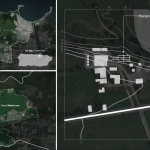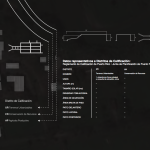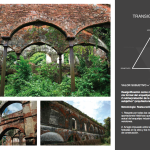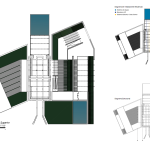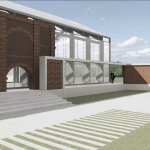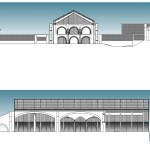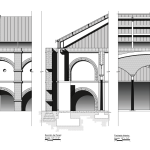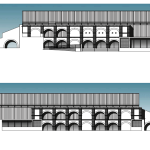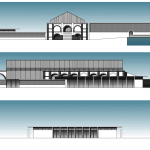Transigencias: La resignificación del arquetipo arquitectónico industrial en Puerto Rico
” Ante la trascendencia functional del arquetipo arquitectónico industrial se evalúa una nueva industria que presenta una oportunidad económicamente viable para lograr su revitalización en la Isla.” – Christian Omar Estrada Cora
Designer: Christian Omar Estrada Cora
Thesis Director & Committee: Juan Penabad, José Coleman-Davis Pagán, Andrea Bauzá
Thesis Date: May 26, 2015
TOS[er]: Kish I. Báez
TOS Post: April 2016
Cuando el arquetipo industrial no puede trascender a través del tiempo es considerado ruina. Por ende, inútil y sin función. Es aquí donde Christian Estrada propone revitalizar una edificación industrial en ruinas conforme a las prioridades de una ciudad posindustrial posmoderna. Bajo este cambio, valores como la expresión, la inversión y la cultura son re-evaluados y transformados conforme a exigencias emergentes al progreso de la Isla. El acto de transigir el patrimonio industrial es posible solo con la reinterpretación objetiva y subjetiva (forma/función) del objeto olvidado. La re-significación de una ruina y su espacio deshabitado en uno de creatividad y exploración mediante la diferencia de materiales y métodos constructivos es como Christian decide transformar lo arruinado. Esto queda evidente en el dialogo que el establece entre los materiales históricos y los contemporáneos, ofreciendo una línea de tiempo evidente en el espacio habitado en todo momento. Si vamos a hablar de arquitectura, las decisiones no son siempre las deseadas, haciendo las transigencias arquitectónicas vital. La capacidad de tolerar discrepancias y transformar un proyecto base a su forma y su función es lo que permite que un concepto pueda llegar a ser arquitectura.
When the industrial archetype cannot transcend through time, it’s considered ruin. In other words, useless and without function. It is there where Christian Estrada proposes the revitalisation of industrial building ruins consenting the priorities of a postindustrial postmodern city. Taking this into consideration, values such as expression, investment and culture are re-evaluated and transformed according to the Island’s progress demand. The only way you can transcend the industrial heritage is by altering the subjective and objective (form/function) values of the forgotten object. The transformation of a ruined space in one of creative exploring via materialisation and the constant respect of the existing over the modern proposal is how Christian Estrada decides to re-function the space. This becomes evident when the dialogues between materials create a perfect timeline that accents what is proposed and what exists. Decisions aren’t always as we want them to be and this is more accurate when we talk about architecture, making compromises a vital part of the equation. The ability to put up with changes and transform a project based on its form and function allows it to transcend and become real architecture.


